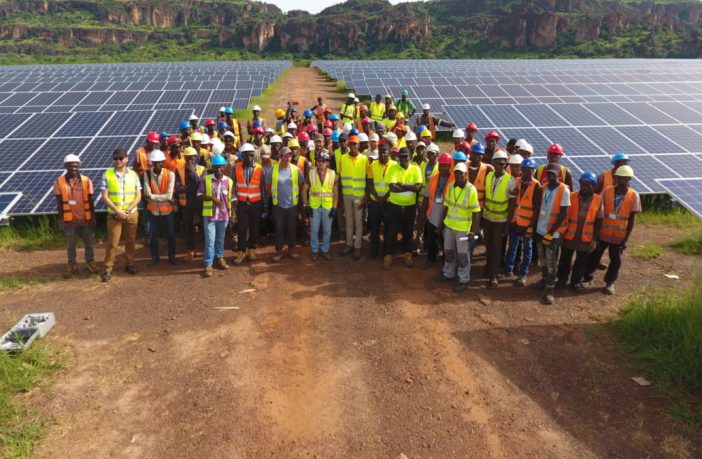Opinion
- Despite the infrequent failures and ‘thermal events’ that are verifiably caused by solar, the hundreds of thousands of solar ecosystem members globally suffer when an issue with a solar site gains media attention.
- In most cases, a sober root-cause analysis will uncover a relatively minor issue that started a cascade of other, more serious problems.
- However, most resulting mainstream media coverage and industry scuttlebutt oversimplifies or ignores the root cause entirely; that’s easier to write about, makes for better headlines, gets more clicks, and helps disperse blame.
A similar thing happens with self-driving cars. Of the 6.7 million reported car accidents on U.S. roadways in 2019, only 327 accidents involved self-driving vehicles. Even in the face of this miniscule percentage, the latter received outsized attention in the media and rarely is the coverage truly nuanced.
For the reported thermal events in the United States, fire departments around the nation responded to an average of 346,800 home structure fires from 2015 to 2019. According to the National Fire Protection Association, the top five leading causes of home fires, in order, are cooking, heating, electrical distribution and lighting equipment, intentional fire setting, and smoking materials. Note that electrical distribution includes electrical outlets, outdated/worn electrical wiring, cords and electrical circuits, old appliances, light fixtures, and portable heaters and does not account for rooftop solar systems.
Fires caused by rooftop PV systems are historically underreported, but the Solar Energy Industries Association maintains that spontaneous combustion from a PV system is extremely rare. The quantitative analysis determined an annual fire incident rate of 0.0289 per MW. A 2022 fault tree analysis published in the Journal of Building Engineering revealed that modules, isolators, inverters, and connectors play a significant role in igniting PV fires, with connectors contributing to 17% of incidents.
The reality is that fires found to have been caused by solar equipment are vanishingly rare. Just like how a self-driving car that crashes on the highway makes the evening news, there is no shortage of media attention when there is a presumption that a structure fire was caused by solar. In the face of the challenge of misconceptions about solar equipment, the industry must come to terms with the reality of collective responsibility and modify its behaviors and practices accordingly. The outcome will be fewer bad headlines for solar and a more unified solar sector overall.
Embracing responsibility, together
One of the challenges with attributing responsibility for a problem on a solar installation is the number of companies involved in the value chain. A fertile ecosystem of blamestorming develops when equipment from half a dozen vendors is deployed at an installation, a seventh designs the system, an eighth installs it, a ninth maintains it, and a tenth owns it. In some cases, this number is even larger. For any individual entity, the path of least resistance is to point to one of the others for culpability. In reality, the companies technically all share responsibility. Reputationally, however, the entire solar industry suffers; all are punished.
To protect the next round of growth, the industry must come to terms with the fact that solar is a team sport. Reliable and efficient solar energy systems depend on the expertise of installers and engineering, procurement, and construction (EPC) companies. These installers, in turn, lean on quality system design and skilled labor for their success. Hardware and software providers occupy a pivotal role in delivering solutions that are not only reliable but also user-friendly and feature rich. The points at which the work of these entities intersect, however, have been too transactional for too long.
‘Crosstalk’ and the solar value chain
Since stating a problem without suggesting a (possible) solution is not productive, here is a recommendation for every company involved in the solar industry: According to the Department of Energy (DOE), solar system quality issues fall into three categories: design flaws, faulty installation, and equipment defects. Any possible solution, therefore, should address one, several, or a combination of these three possible causes. A worthy and real example through which to investigate the blame-reputation dialectic is ‘crosstalk.’
Any large electrical system with long wire runs and multiple transmitters is susceptible to crosstalk. The term is solar industry shorthand for electromagnetic interference (EMI), created by the interaction of two or more electromagnetic fields of adjacent energized cables. The phenomenon is present in wired communications in home automation, automobiles, or entertainment systems in commercial buildings and residences.
Crosstalk can be minimized, even eliminated, when several preconditions are met, starting with well-trained engineers who design systems such that crosstalk does not occur. In large-scale C&I solar installations, the most efficient wire layouts often require that home runs to inverters share cable races. When array voltage increases towards the inverter-side of the cable run, as multiple strings come together, the close proximity of these cables can result in mutual EMI radiation. That is not a big issue for shielded cables that only carry current, but this type of interference can cause problems for data communications signals.
The installation process is another node in crosstalk mitigation. Installation teams must be well-trained, follow equipment vendor installation guidelines, use high-quality components, and install those components correctly. For systems that were designed according to crosstalk avoidance strategies but were not installed properly, diagnosis and rework are usually costly, margin-eroding exercises that can foul reputations and sour customer relationships.
The final piece of the quality puzzle is the quality of the products being deployed. Suppliers should have a continuous improvement approach to quality with a systematic root cause corrective action analysis, thorough documentation, and a great support team.
Hanging together
Although a single self-driving car accident damages the reputation of all purveyors of self-driving cars, we do not impugn the automobile industry at large. In reality, self-driving car accidents are rare, just like fires caused by solar equipment. Perception, however, often becomes reality. Every company in the value chain has a role in upholding the reputation of solar energy. And that goes for every step in the solar value chain, too; from engineering, procurement and construction to installation teams and distributors.
By prioritizing quality in design, installation, equipment, and service, we collectively propel the growth and success of solar energy solutions. This shared commitment contributes significantly to paving the way for a more sustainable future powered by the brilliance of solar innovation.
Beyond our close-knit solar community, any hiccups in commercial installations tend to cast a spotlight on ‘solar’ as the culprit. This holds true for the customers we collectively serve. Whether for better or worse, we find ourselves sharing the same ‘solar’ identity, which implies that our fortunes and misfortunes are connected. The solar industry is maturing rapidly, and the quality across every aspect of the value chain is good, but focusing on continuous improvement is critical.
Author: JD Dillon
JD Dillon is chief marketing officer at Tigo Energy. His experience spans the U.S. Armed Forces, semiconductors, solid-state drive, and the solar industry. His functional leadership has had an impact on pricing, new product introduction, customer experience, and communications at all levels.
This article was originally published in pv magazine and is republished with permission.
Disclaimer: The articles and videos expressed in this publication are those of the authors. They do not purport to reflect the opinions or views of Green Building Africa, pv magazine, our staff or our advertisers. The designations employed in this publication and the presentation of material therein do not imply the expression of any opinion whatsoever on the part Green Building Africa concerning the legal status of any country, area or territory or of its authorities.
















